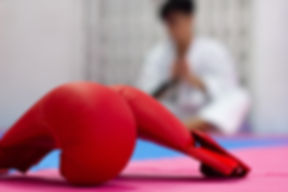
Shitoryu Karate History

Kenwa Mabuni (摩文仁 賢和 Mabuni Kenwa), the founder of Shito-ryu karate, born in Shuri, Okinawa in 1889, was a 17th generation descendant of the famous warrior Uni Ufugusuku Kenyu. As a child, Mabuni began training in karate intensively to overcome his poor health. At 13, He began training in the art of Shuri-te (首里手) in his home town under the tutelage of the legendary Ankō Itosu (糸州 安恒 Itosu Ankō, 1831–1915). He trained diligently for several years, learning many kata from this great master. It was Itosu who first developed the Pinan kata, which were most probably derived from the Kusanku form. With the help of his close friend Chōjun Miyagi (宮城 長順 Miyagi Chōjun), co-founder of Gojū-ryū Karate, Mabuni was introduced to another great master of that period, Kanryō Higaonna (東恩納 寛量 Higaonna Kanryō). Mabuni began to learn Naha-te (那覇手). While both Itosu and Higaonna taught a "hard-soft" style of Okinawan Te, their methods and emphases were quite distinct.
Mabuni also sought instructions from a number of other teachers, including Masters Seishō Aragaki, Matsumura Tawada Shimboku, Sueyoshi Jino and Wu Xianhui (a Chinese master known as Go-Kenki). In fact, Mabuni was well-known for his knowledge of kata and their bunkai applications.
By mixing the teachings of Master Itosu and Master Higaonna, he developed a new system, originally named Hanko-ryu (Half-Hard style). However, he later changed it to Shito-ryu, to reflect the deep respect he felt towards his two great masters. The name 'Shito' was derived from the combination of 'shi' and 'to', the two first characters of Master Itosu’s and Master Higaonna’s names .
By 1929, Mabuni had moved to Osaka to become a full-time karate instructor. In order to bring Shito-ryu to the general public's attention, Master Mabuni would perform many demonstrations, breaking bricks and boards to show the power of karate. He would also give free classes at various police stations across western Japan in a bid to gain greater acceptance of his art.
In Japan, Shotokan-ryu, Wado-ryu, Goju-ryu and Shito-ryu are the four main styles of karate. Compared to the other styles, Shito-ryu preserves most of the original Shuri-te techniques. It also preserves original Naha-te techniques, similar to Goju, although each style emphasises different points. Technically, Shuri-te and Tomari-te have fast and straight movements, while Naha-te has circular and supple movements.
Master Mabuni died in his 64th year on May 23rd 1952, but his system remains one of the four major styles in Japan.

